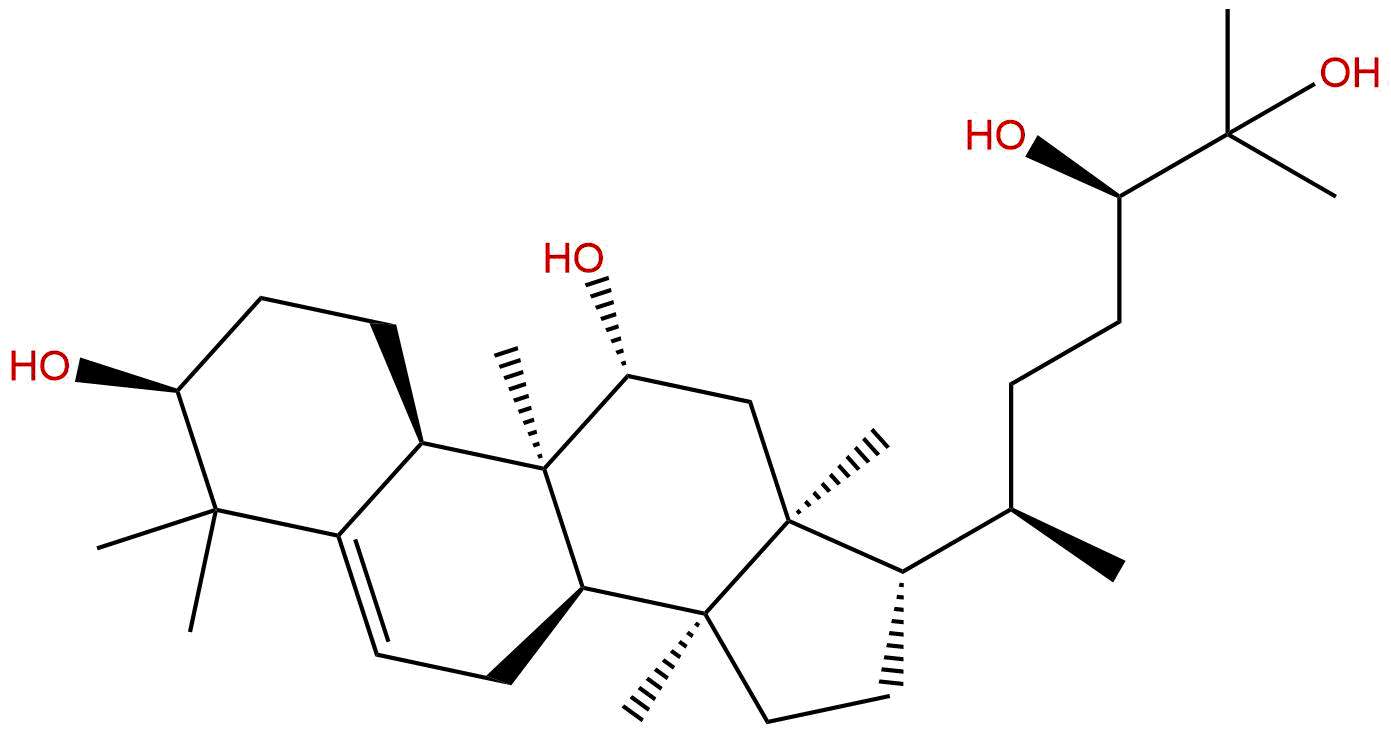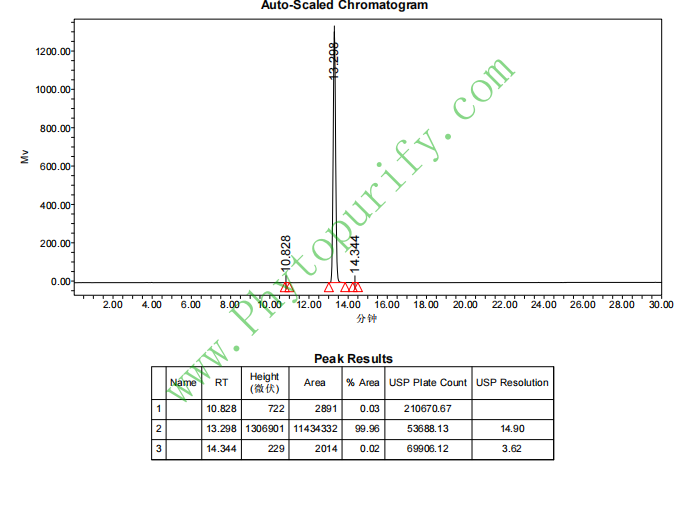
MogrolCAS No.:88930-15-8
|
||||||||||
 |
|
|
||||||||

| Catalogue No.: | BP1837 |
| Formula: | C30H52O4 |
| Mol Weight: | 476.742 |
Product name: Mogrol
Synonym name:
Catalogue No.: BP1837
Cas No.: 88930-15-8
Formula: C30H52O4
Mol Weight: 476.742
Botanical Source:
Physical Description:
Type of Compound: Triterpenoids
Purity: 95%~99%
Analysis Method: HPLC-DAD or/and HPLC-ELSD
Identification Method: Mass, NMR
Packing: Brown vial or HDPE plastic bottle
The product could be supplied from milligrams to grams. Inquire for bulk scale.
We provide solution to improve the water-solubility of compounds, thereby facilitating the variety of activity tests and clinic uses.
For Reference Standard and R&D, Not for Human Use Directly.
Description:
Mogrol has exhibited anti-cancer activities, it suppressed leukemia cell growth via inhibition of the ERK1/2 and STAT3 pathways, in particular, through the suppression of p-ERK1/2 and p-STAT3. Mogrol significantly improved LPS-induced memory impairment in mice. It also suppressed adipogenesis by reducing CREB activation in the initial stage of cell differentiation and by activating AMPK signaling in both the early and late stages of this process.
References:
American Journal of Cancer Research,2015,5(4):1308-1318.
Mogrol represents a novel leukemia therapeutic, via ERK and STAT3 inhibition.
Unlike solid tumors, the primary strategy for leukemia treatment is chemotherapy. However, leukemia chemotherapy is associated with adverse drug effects and drug resistance. Therefore, it is imperative to identify novel agents that effectively treat leukemia while minimizing adverse effects.
METHODS AND RESULTS:
The Raf/MEK/extracellular regulated kinase (ERK) and signal transducer and activator of transcription 3 (STAT3) pathways have been implicated in leukemia carcinogenesis, and provide novel molecular targets for therapeutic intervention in cancer. Mogrol, a biometabolite of mogrosides found in Siraitia grosvenorii, has exhibited anti-cancer activities; however, the underlying mechanism of this effect remains unclear. To clarify its anti-cancer activity and mechanism of action, we treated K562 leukemia cells with Mogrol. Mogrol suppressed leukemia cell growth via inhibition of the ERK1/2 and STAT3 pathways, in particular, through the suppression of p-ERK1/2 and p-STAT3. Inhibition of these pathways suppressed Bcl-2 expression, thereby inducing K562 cell apoptosis. Furthermore, Mogrol enhanced p21 expression, resulting in G0/G1 cell cycle arrest.
CONCLUSIONS:
The findings provide new perspectives regarding the role of Mogrol in leukemia treatment.
PLoS ONE, 2016, 11(9):e0162252.
Mogrol Derived from Siraitia grosvenorii Mogrosides Suppresses 3T3-L1 Adipocyte Differentiation by Reducing cAMP-Response Element-Binding Protein Phosphorylation and Increasing AMP-Activated Protein Kinase Phosphorylation.
This study investigated the effects of Mogrol, an aglycone of mogrosides from Siraitia grosvenorii, on adipogenesis in 3T3-L1 preadipocytes.
METHODS AND RESULTS:
Mogrol, but not mogrosides, suppressed triglyceride accumulation by affecting early (days 0–2) and late (days 4–8), but not middle (days 2–4), differentiation stages. At the late stage, Mogrolincreased AMP-activated protein kinase (AMPK) phosphorylation and reduced glycerol-3-phosphate dehydrogenase activity. At the early stage, Mogrol promoted AMPK phosphorylation, inhibited the induction of CCAAT/enhancer-binding protein β (C/EBPβ; a master regulator of adipogenesis), and reduced 3T3-L1 cell contents (e.g., clonal expansion). In addition, Mogrol, but not the AMPK activator AICAR, suppressed the phosphorylation and activity of the cAMP response element-binding protein (CREB), which regulates C/EBPβ expression.
CONCLUSIONS:
These results indicated that Mogrol suppressed adipogenesis by reducing CREB activation in the initial stage of cell differentiation and by activating AMPK signaling in both the early and late stages of this process.
Journal of Asian Natural Products Research, 2019:1-15.
Mogrol attenuates lipopolysaccharide (LPS)-induced memory impairment and neuroinflammatory responses in mice.
This study aimed to evaluate whether Mogrol, a main bioactive ingredient of Siraitia grosvenorii, could attenuate LPS-induced memory impairment in mice.
METHODS AND RESULTS:
The behavioral tests and immunohistochemical analysis and Western blot were performed.
CONCLUSIONS:
The present results showed that oral administration of Mogrol (20, 40, 80 mg/kg) significantly improved LPS-induced memory impairment in mice. The results also indicated that Mogrol treatment significantly reduced the number of Iba1-positive cells, the nuclear NF-κB p65 and levels of TNF-α, IL-1β and IL-6 both in the hippocampus and frontal cortex of LPS-challenged mice.
HPLC of Mogrol
